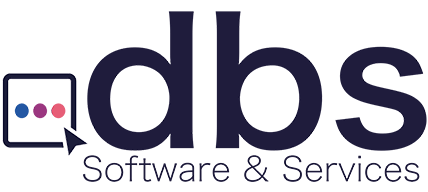
Building a Digital-First Culture: The Human Side of going from paper to digital
In an era where market leaders are often defined by digital prowess, the concept of a paperless organization has evolved from a nice-to-have to a strategic imperative. The pursuit of a digital-first culture, however, is far more than just a technological overhaul. It’s a human journey, and it comes with its challenges and opportunities. While the benefits have been extensively researched, including increased efficiency, streamlined workflows, and enhanced data accessibility, the most crucial element in a paperless transition is often disregarded: the human side.
This transition marks a cultural shift in how organizations operate. The comfort of paper and manual processes is replaced with the intangible nature of digital files and workflows. Even today, for many organizations, paper is still prevalent in business operations—a physical representation of information, a tangible trail of accountability. To move away from it is to ask employees to change ingrained habits, which can be perceived as an unnecessary burden and, in some cases, even to confront a fear of the unknown. Therefore, building a digital-first culture requires more than just implementing new software tools; it must also foster a new mindset.
The Psychology of Paper: Why Letting Go is Hard
The loyalty to paper is often underestimated. Even today, a paper document gives a better sense of control and permanence. Paper can be held, annotated, and physically passed to a colleague. This physical interaction creates a stronger sense of ownership and understanding for some. This move to a digitally focused environment can sometimes feel like a loss of this control. Furthermore, a stack of papers serves as a better visual reminder of pending tasks, while digital files are often overlooked due to the “out of sight, out of mind” phenomenon. When those tasks are relegated to an image on a screen, some employees may feel a sense of unease or a fear that important work will be overlooked. The starting point in a human-centric paperless transition is to acknowledge and address these psychological obstacles.
The Vitality of Empathetic Leadership
The commitment and behavior of its leaders often determine the success of any significant organization. A digital transformation is no exception. Leaders must be more than just champions of the new digital tools; they must be empathetic guides who understand the anxieties of their teams.
This means leading by example. When executives and managers are early and enthusiastic adopters of digital workflows, it sends a powerful message to the rest of the organization. If leaders continue to rely on printed documents, they inadvertently signal that the new digital systems are optional or worse, not to be trusted.
Effective leadership also involves clear and consistent communication. It’s not enough to announce the “what” and the “how” of the transformation. Leaders must passionately articulate the “why.” This narrative should focus not just on the bottom-line benefits for the company, but also on the advantages for the employees themselves: less time spent on tedious administrative tasks, easier collaboration with colleagues, and the opportunity to develop new and valuable digital skills.
Empowering Employees: The Cornerstone of a Digital-First Culture
A digitally focused work culture cannot be imposed on employees; it must be cultivated. This begins with empowering employees and making them active participants in the transformation journey. Rather than a top-down mandate, the transition should be a collaborative effort.
- Training and Upskilling: Simply teaching employees how to use new software is not sufficient; comprehensive training is required. It’s about building their confidence and digital literacy. Different styles of learning and comfort levels with technology should be kept in mind while designing training programs. Peer-led training sessions, where “digital champions” within teams can share their knowledge and best practices, can be particularly effective. The goal is to create a supportive environment where employees can easily experiment with new tools and feel comfortable asking questions without the fear of judgment.
- Including Employees’ Input: Whenever possible, the selection and implementation of any new digital solution should include employees’ input. Ask for their feedback on which processes are the most paper-intensive and which digital tools would be most helpful in their daily work. This ensures better-informed decisions and also creates a sense of ownership and buy-in. When employees feel that their voices have been heard, they are more likely to embrace the changes.
- Celebrating Small Wins: A full digital transformation involves several steps that must be implemented over time. Hence, it is important to celebrate all the milestones during this transition. The teams that successfully digitize their workflows and significantly reduce paper consumption should be acknowledged and rewarded. Recognizing these small wins helps build momentum and encourages other employees to follow suit, discovering the tangible benefits of the digital transition.
Navigating the Inevitable Bumps in the Road
This transition is likely to present its own challenges. In several instances, employees tend to revert to old habits during moments of frustration and technical glitches. The key is to anticipate these challenges and to have a plan in place to address them.
Creating a dedicated support system, whether it’s an IT help desk or a team of “go-to” digital experts, is crucial. Giving employees a place to turn when they are facing problems is key to making them feel heard. Instead of penalizing those who struggle, offer additional support and reinforcement.
Choosing Your Ally: The Importance of the Right Technology Partner
While the focus is rightly on people and culture, technology itself plays a pivotal role. In this regard, choosing the correct technological vendor is an essential decision- this vendor will become a partner and ally in this human-centric transition. This partner will understand that simply selling the software does not ensure its successful adoption. It’s important to look for a partner who offers intuitive, easy-to-use platforms that minimize friction for employees. Furthermore, review the partner for the quality of their onboarding process, the responsiveness of their support team, and the extent of their training resources. A partner who invests in understanding your unique organizational challenges and works alongside you to support your team can be the difference between a stalled initiative and a thriving digital culture.
The Future is Human-Centric and Digital
Ultimately, building a digital-first culture is an investment in people. The technology may be the enabler, but it is the employees who will drive the transformation and unlock its full potential. When organizations focus on the human side of the digital transition- by being empathetic to the changes, recognizing the psychological barriers, correctly training their employees, and celebrating progress- they can foster a culture that is not only more efficient and agile but also more resilient and innovative. The paperless office of the future is not one devoid of human interaction, but one where technology empowers people to work smarter, collaborate more effectively, and focus on what truly matters.

dbs Software & Services (dbs) is a long-standing provider of document management and process automation solutions for education and business, and the exclusive provider of Tessi Docubase® in North America.
Tessi Docubase® is an enterprise-grade modular, secure, and easy-to-use document management system that seamlessly integrates with Business Information Systems. Its secure architecture and a broad range of features make it the perfect solution for a wide range of enterprises and use cases.
dbs LiveForms, is a low-code Business Process Automation platform. Its sole focus is simplifying complex processes by automating repetitive steps – from data capture to alerts, notifications, email confirmations, and everything in between quickly, without involving a programmer.
dbs eSign is a cloud-based electronic signature solution that allows users to manage the signing process for a document, from upload to signing and sealing, from any mobile device or computer.


Leave A Comment